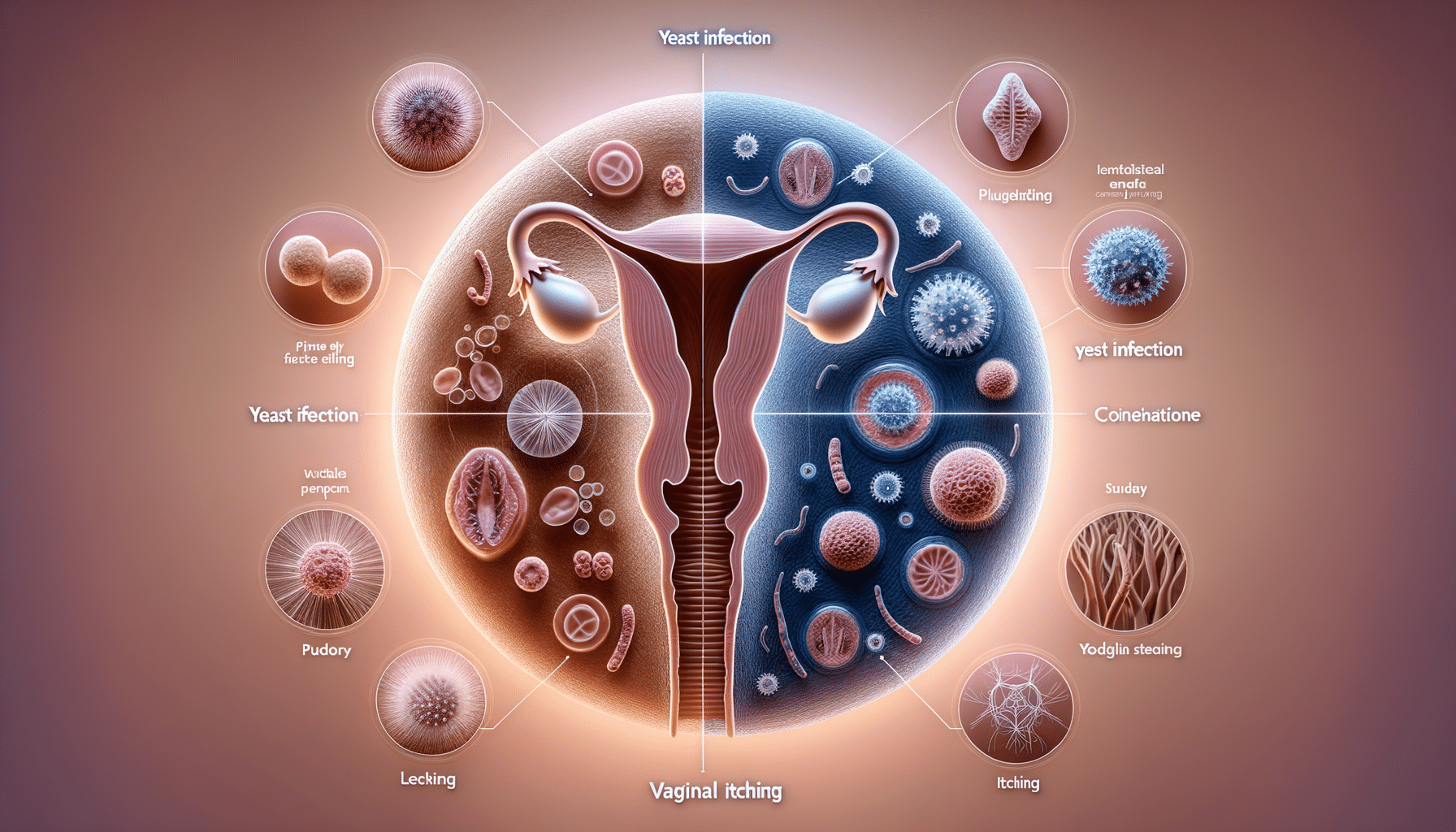
Yeast Infection vs. Vaginal Itching: The Key Differences Explained
Introduction to Yeast Infections and Vaginal Itching
Understanding the differences between a yeast infection and vaginal itching is essential for effective treatment and prevention. While both conditions can cause discomfort, they arise from different causes and require distinct approaches for relief. In this article, we’ll delve into the key differences between these two common issues, providing clarity and guidance for those affected.
Causes and Symptoms of Yeast Infections
Yeast infections, medically known as candidiasis, are primarily caused by an overgrowth of the fungus Candida, which naturally resides in the vaginal area. Factors such as antibiotics, pregnancy, diabetes, and a weakened immune system can disrupt the balance of bacteria and yeast, leading to infection. Symptoms typically include:
- Intense itching and irritation in the vaginal area
- A thick, white, odorless discharge resembling cottage cheese
- Redness and swelling of the vulva
- Burning sensation during urination or intercourse
Recognizing these symptoms can help in seeking timely medical advice and treatment.
Understanding Vaginal Itching
Vaginal itching, on the other hand, can result from a variety of causes, not just yeast infections. Itching can be due to irritants such as soaps, detergents, or fabric softeners, as well as conditions like bacterial vaginosis, sexually transmitted infections (STIs), or menopause-related hormonal changes. Unlike yeast infections, vaginal itching may not always be accompanied by discharge. Key symptoms include:
- Persistent itching and discomfort
- Possible redness or rash
- Absence of the thick discharge typical of yeast infections
Identifying the root cause of vaginal itching is crucial for effective treatment and relief.
Treatment Options for Yeast Infections
Treating a yeast infection often involves antifungal medications, which can be prescribed as oral tablets, creams, or suppositories. Over-the-counter options are also available, but it’s important to consult a healthcare provider to confirm the diagnosis. In addition to medication, lifestyle changes can help prevent future infections, such as:
- Wearing breathable, cotton underwear
- Avoiding douches and scented feminine products
- Maintaining good hygiene practices
These measures can help maintain the natural balance of bacteria and yeast in the vaginal area.
Managing and Preventing Vaginal Itching
Managing vaginal itching involves addressing the underlying cause. If the itching is due to irritants, switching to hypoallergenic products can alleviate symptoms. For hormonal-related itching, hormone replacement therapy may be recommended. General preventive measures include:
- Using gentle, fragrance-free soaps
- Wearing loose-fitting clothing
- Staying hydrated and maintaining a balanced diet
By understanding the specific cause of vaginal itching, individuals can take targeted steps to prevent recurrence and maintain vaginal health.
Conclusion: Navigating Yeast Infections and Vaginal Itching
In conclusion, while yeast infections and vaginal itching can present similarly, they are distinct conditions requiring different approaches. By recognizing the symptoms and understanding the causes, individuals can seek appropriate treatment and adopt preventive measures to ensure better vaginal health. Consulting with healthcare professionals is always recommended for a precise diagnosis and tailored treatment plan.


